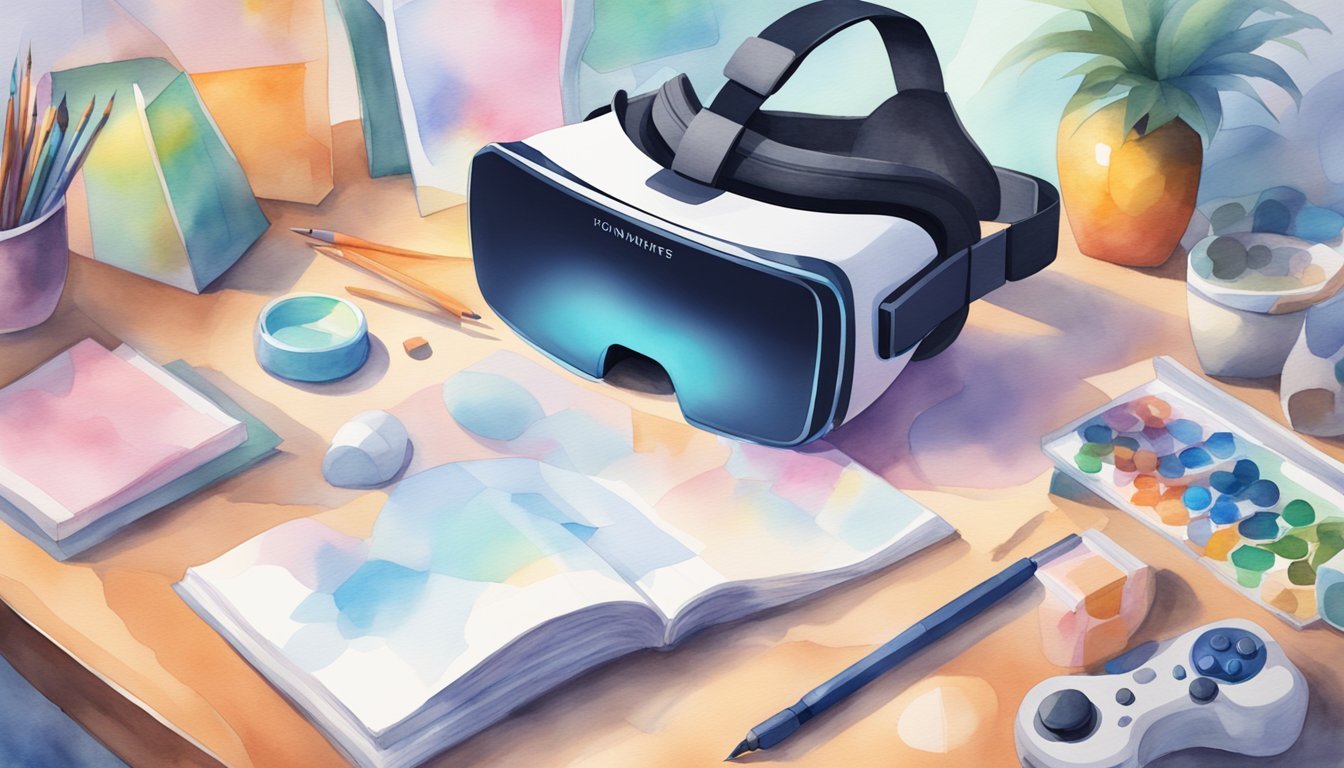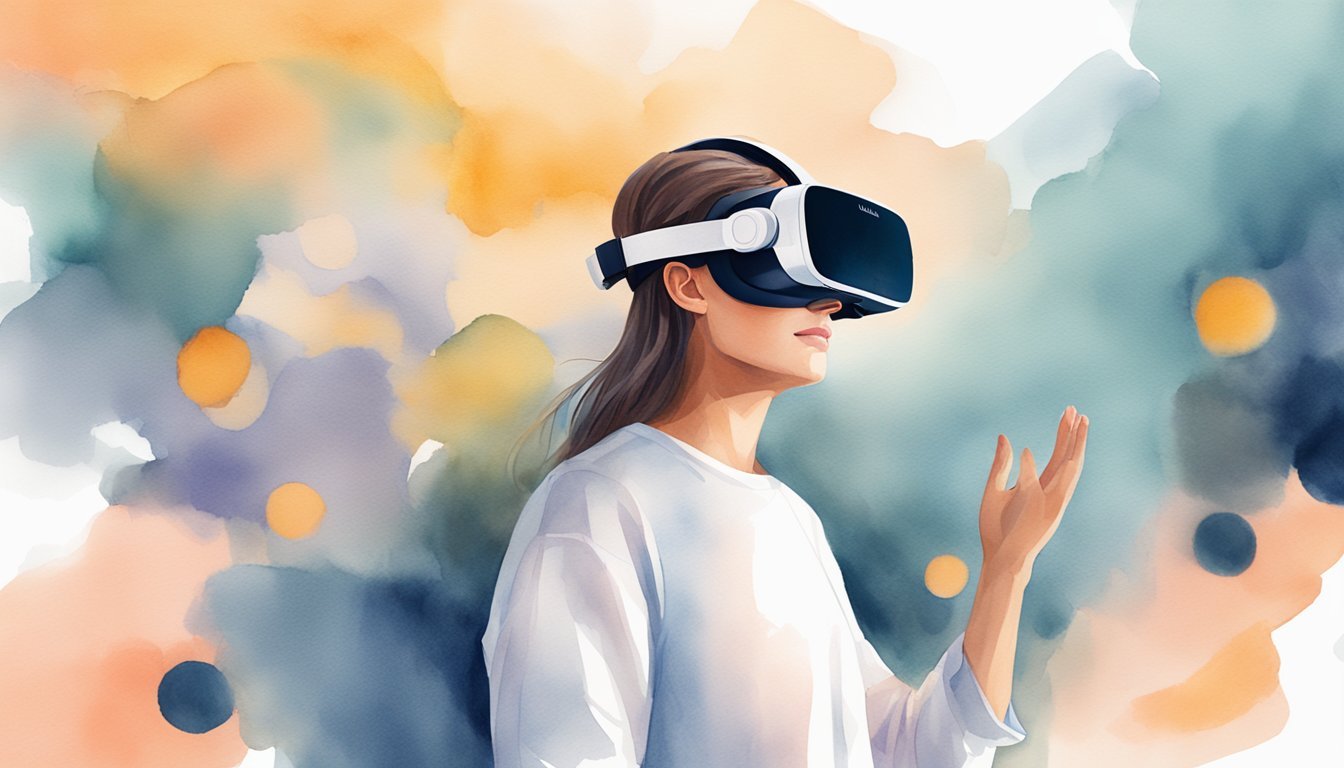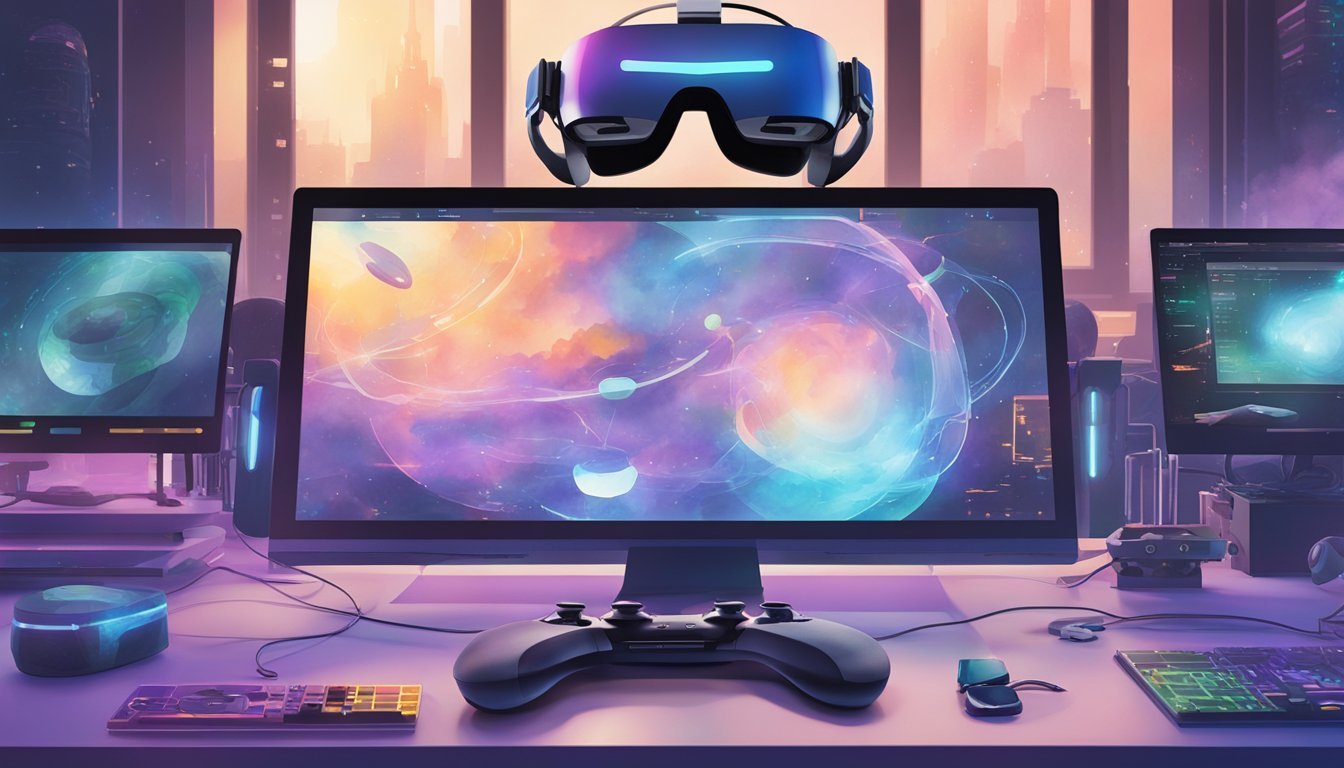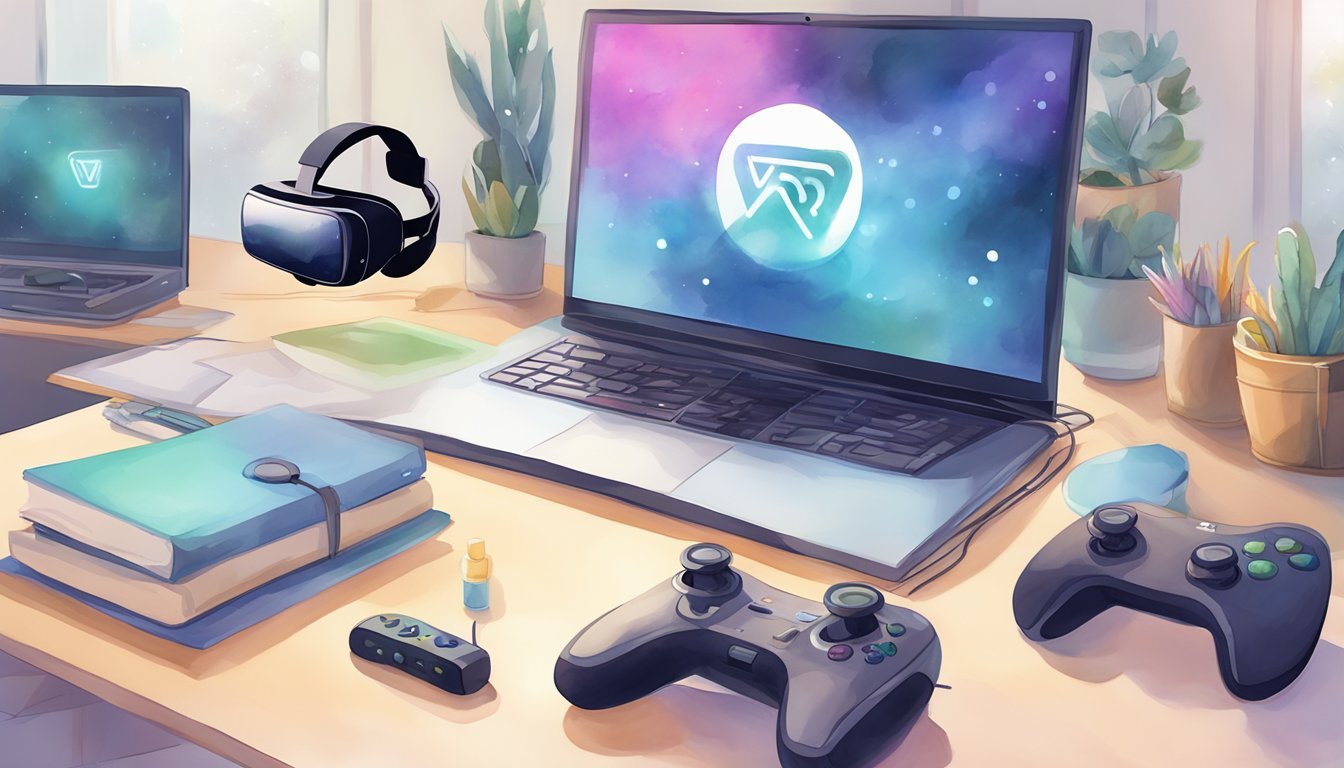7 Virtual Reality Courses for Game Design and Development: Enhancing Skills in Immersive Technology

Virtual reality is changing the way we experience games and entertainment.
As this technology grows, more people want to learn how to make VR games and apps.
Taking online courses is a great way to start your journey into VR game design and development.

There are many VR courses available that can teach you the skills you need. These courses cover topics like 3D modeling, programming, and using game engines to create immersive VR worlds. You can learn at your own pace and build a portfolio of VR projects.
Whether you’re a beginner or have some coding experience, there’s a course that can help you reach your VR development goals.
1) Introduction to Virtual Reality by Coursera
Introduction to Virtual Reality is a course offered by Coursera that covers the basics of VR technology.
You’ll learn about VR hardware, its history, and various applications.
The course is designed for beginners with no prior VR experience.
It’s a great starting point if you’re interested in game design and development using virtual reality.
You’ll explore different VR applications and dive into the psychology behind virtual reality experiences.
This knowledge is crucial for creating immersive and engaging VR games.
The course also addresses challenges in the VR medium.
Understanding these hurdles will help you design better VR games and applications in the future.
By the end of the course, you’ll have a solid foundation in VR concepts.
This knowledge will be valuable as you move forward with more advanced game design and development courses.
The course is part of a larger Virtual Reality Specialization on Coursera.
It serves as an excellent introduction to the field and prepares you for more in-depth VR studies.
You can enroll in this course for free on Coursera.
It’s a great way to start your journey into the world of virtual reality game design and development.
2) VR Game Development with Unity by Udacity
Udacity offers a VR Developer Nanodegree program that can help you learn VR game development using Unity.
This course is designed for those who want to start a career in VR development or expand their skills in this exciting field.
The program costs $199 per month and provides you with specialized courses created in partnership with industry leaders.
You’ll get hands-on experience by building real products and creating a professional portfolio.
In this course, you’ll learn how to use Unity to create immersive VR experiences.
You’ll gain skills in 3D modeling, animation, and interactive design specifically for virtual reality environments.
The program emphasizes a practical approach to learning.
You’ll work on projects that simulate real-world VR development challenges.
This helps you build a strong foundation in VR game design and development.
As part of the Nanodegree, you’ll have access to mentorship and career support.
This can be valuable for networking and finding job opportunities in the VR industry after completing the course.
By the end of the program, you’ll have a solid understanding of VR development principles and the technical skills needed to create your own VR games and applications using Unity.
3) Virtual Reality Specialization by University of London
The University of London offers a Virtual Reality Specialization on Coursera.
This program consists of five courses that teach you about VR development.
You’ll start with an introduction to VR concepts and technologies.
Then you’ll move on to 3D models and game engines.
The specialization covers important topics like 3D interaction design for VR.
You’ll learn how to create immersive experiences that go beyond simple buttons and menus.
Unity is the main development platform used in this program.
You’ll gain hands-on experience building VR applications with this popular game engine.
By the end of the specialization, you’ll be able to design, test, and implement your own VR games and experiences.
The courses are suitable even if you have no prior VR or game programming experience.
The program is developed by experts from Goldsmiths, University of London. Dr. Sylvia Xueni Pan and Dr. Marco Gillies bring 25 years of combined experience to the course content.
You can complete the specialization at your own pace over approximately 26 weeks.
This flexibility allows you to balance your learning with other commitments.
4) Unreal Engine VR Masterclass by Udemy
Unreal Engine is a powerful tool for creating virtual reality experiences.
The Unreal Engine VR Development Fundamentals course on Udemy offers a solid introduction to VR game design.
You’ll learn how to set up and configure Unreal Engine for VR projects.
The course covers key topics like locomotion, interaction, and sound implementation in virtual environments.
By taking this course, you can save time learning complex VR concepts.
The tutorials are designed to help you grasp the fundamentals quickly and start your Unreal Engine career.
The course also teaches you how to optimize your VR games for performance.
This is crucial for creating smooth, enjoyable experiences for players.
You’ll gain skills in UI implementation for VR games.
This knowledge is essential for creating user-friendly interfaces in virtual spaces.
The instructors guide you through the process of preparing your content for VR.
You’ll learn best practices for adapting 3D assets and environments to work well in virtual reality.
By the end of the course, you’ll have the skills to finish and submit your VR game to platforms like the Oculus Store.
This practical knowledge can help jumpstart your career in VR game development.
5) Spatial Audio for VR by LinkedIn Learning

Spatial audio is a key element in creating immersive virtual reality experiences.
LinkedIn Learning offers a course that teaches you the basics of spatial audio for VR applications.
In this course, you’ll learn how spatial sound in VR differs from traditional audio.
You’ll discover techniques for creating realistic 3D soundscapes that enhance user engagement in virtual environments.
The course covers the fundamentals of VR spatial audio, including how it works and why it’s important for VR development.
You’ll gain insights into the tools and software used to create spatial audio effects.
You’ll explore practical examples of successful VR spatial audio implementations.
These real-world cases will help you understand how to apply spatial audio techniques in your own VR projects.
The course also addresses common challenges in implementing spatial audio and provides strategies to overcome them.
You’ll learn best practices for optimizing audio performance in VR applications.
By the end of the course, you’ll have the skills to create convincing 3D audio environments that complement your VR visuals.
This knowledge will help you develop more immersive and engaging VR experiences for users.
6) VR Development for Oculus Quest 2 by Pluralsight

Pluralsight offers a range of courses to help you learn VR development for the Oculus Quest 2.
These courses cover the basics of setting up Unity for VR projects and creating interactive VR experiences.
You’ll learn how to configure Unity projects for Oculus Quest using the latest XR Plugin Management.
This step is crucial for getting your VR applications running smoothly on the Quest 2 hardware.
The courses teach you about designing for virtual reality, including best practices for creating immersive environments and user interfaces.
You’ll gain insights into VR-specific design considerations that can enhance user comfort and engagement.
Pluralsight’s VR development courses also cover important topics like implementing VR interactions, optimizing performance, and integrating audio for a more immersive experience.
These skills are essential for creating high-quality VR games and applications.
By taking these courses, you’ll build a strong foundation in Unity VR fundamentals.
This knowledge will help you create engaging VR content for the Oculus Quest 2 platform, opening up new possibilities in game design and development.
7) Google VR SDK for Unity by Google Developers
Google’s VR SDK for Unity helps you create virtual reality experiences for Android devices.
It’s a great tool for beginners and experienced developers alike.
To get started, you’ll need to download the SDK and set up your Unity project.
The SDK supports both Cardboard and Daydream platforms.
Once installed, you can enable VR support in your Unity project settings.
This allows you to build VR apps for Android devices.
The SDK provides helpful features like stereoscopic rendering and head tracking.
These make it easier to create immersive VR experiences.
You’ll find sample scenes and prefabs in the SDK.
These can help you learn how to use VR elements in your projects.
Google offers documentation and guides to help you along the way.
These resources cover topics from basic setup to advanced features.
Keep in mind that while Daydream is no longer supported, you can still develop for Cardboard.
The open-source Cardboard SDK continues to be available for developers.
With Google’s VR SDK, you can create VR games and apps that run on a wide range of Android devices.
It’s a valuable tool for expanding your game design and development skills into the world of virtual reality.
Understanding Virtual Reality in Game Design
Virtual reality transforms gaming by immersing players in digital worlds.
It relies on specialized hardware and software to create realistic, interactive experiences.
Basic Principles of VR in Gaming
VR games use 3D graphics and motion tracking to create immersive environments.
You’ll feel like you’re inside the game world thanks to head-mounted displays that show 360-degree views.
Controllers let you interact with virtual objects naturally.
Sound plays a big role too – 3D audio makes games more realistic by mimicking how you hear in real life.
VR games often use room-scale tracking.
This lets you walk around and explore virtual spaces as if they were real.
Key Technologies Used in VR Gaming
Head-mounted displays are essential for VR gaming.
These headsets have screens that show 3D images right in front of your eyes.
Motion controllers track your hand movements.
They let you grab, throw, and manipulate objects in games.
Sensors placed around your play area track your position.
This data helps the game adjust what you see as you move.
Many VR games use haptic feedback.
This technology creates a sense of touch, making virtual objects feel more real.
Game engines like Unity are crucial for creating VR experiences.
They provide tools to build 3D worlds and add interactivity.
Advanced Techniques in VR Game Development

VR game development requires specialized skills to create immersive and high-performing experiences.
Mastering advanced techniques can elevate your projects and push the boundaries of virtual reality gaming.
Incorporating Immersive Environments
Creating realistic and engaging VR environments is crucial for immersive experiences.
Start by focusing on spatial audio to enhance realism.
Use 3D sound effects that change based on the player’s position and head movements.
Implement haptic feedback to add a tactile dimension to your game.
This can include vibrations in controllers or full-body suits for more advanced setups.
Consider using photogrammetry to capture real-world objects and environments.
This technique allows you to create highly detailed 3D models that look incredibly lifelike in VR.
Dynamic lighting and shadows play a big role in immersion.
Use advanced rendering techniques to create realistic lighting that responds to player actions and in-game events.
Optimizing Performance for VR
Performance optimization is critical in VR to prevent motion sickness and maintain smooth gameplay.
Begin by using level of detail (LOD) techniques to reduce polygon counts for distant objects.
Implement occlusion culling to avoid rendering objects that aren’t visible to the player.
This can significantly improve frame rates, especially in complex scenes.
Use texture atlasing to combine multiple textures into a single, larger texture.
This reduces draw calls and improves rendering speed.
Consider foveated rendering, which reduces image quality in the player’s peripheral vision.
This technique can boost performance without noticeably affecting visual quality.
Optimize your code by profiling and identifying performance bottlenecks.
Use asynchronous operations for loading assets and avoid unnecessary computations during frame updates.
Frequently Asked Questions

Virtual reality game design and development courses offer exciting opportunities to learn new skills.
Many options exist for aspiring VR developers, from free online resources to university programs.
What are the top VR game design and development courses available online?
Some of the best VR courses include Introduction to Virtual Reality by Coursera, VR Game Development with Unity by Udacity, and the Virtual Reality Specialization by University of London.
These courses cover VR basics, game development tools, and advanced techniques.
How can I learn VR game development for free?
You can find free VR development tutorials on YouTube and game engine websites.
Unity and Unreal Engine offer free learning resources.
Some online platforms provide free trials or auditing options for VR courses.
What skills are required to become a VR game developer?
VR game developers need programming skills, 3D modeling abilities, and knowledge of game engines.
Understanding user experience design and spatial audio is also important.
Strong problem-solving and creativity help in creating immersive VR experiences.
What software is commonly used for VR game development?
Popular VR development tools include Unity, Unreal Engine, and Oculus SDK. 3D modeling software like Blender or Maya is often used.
Audio editing programs and version control systems are also useful for VR projects.
Are there any VR game design and development courses offered by universities?
Yes, many universities now offer VR-related courses.
The University of London’s Virtual Reality Specialization is one example.
Check with local colleges or online degree programs for VR game development options.
What does a typical VR game development course syllabus include?
VR course syllabi often cover VR basics, 3D modeling, game engine use, and VR-specific design principles.
Topics may include user interaction, spatial audio, and optimization techniques.
Courses usually involve hands-on projects to build VR experiences.

